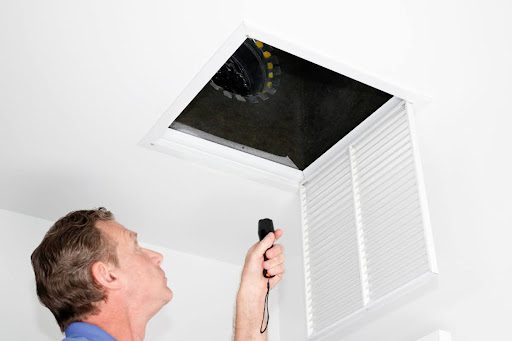Life is busy, isn’t it? Between work, family, and trying to squeeze in a little time for ourselves, it’s easy for some things to slip through the cracks. One of the things we often overlook is the state of our air ducts. Out of sight, out of mind, right?
Unfortunately, ignoring leaking ductwork can lead to a range of issues, especially when it comes to the efficiency of your HVAC system. In this blog, we’ll discuss how leaky ducts impact HVAC performance and why it’s important to keep them in good shape.
The Ins and Outs of Your HVAC System
Although you may be eager to learn how leaky air ducts impact HVAC energy efficiency, let’s start by breaking down some key terms. “HVAC” stands for Heating, Ventilation, and Air Conditioning. It’s the system responsible for maintaining the comfort of your home by regulating temperature and airflow. A well-functioning HVAC system relies heavily on a network of ducts to distribute heated or cooled air throughout your home.
What Are Leaky Ducts?
Leaky ducts refer to gaps, cracks, or holes in your ductwork that allow air to escape. This can happen for various reasons, such as age, poor installation, or physical damage. Over time, even minor leaks can become serious problems, leading to decreased efficiency and increased energy bills.
How Leaky Air Ducts Impact HVAC Energy Efficiency
Leaky air ducts are a significant concern because they directly affect your HVAC system and make it less energy efficient. Here’s how:
Increased Energy Consumption
When air escapes through leaks in your duct systems, your HVAC system has to work harder to reach your desired temperature. This increased workload means your system uses more energy, leading to higher energy bills. It’s a bit like trying to fill a bucket with a hole in it — you’ll need more and more water to keep it full.
Reduced Cooling and Heating Efficiency
When you have leaky ducts, some of the conditioned air your HVAC system produces will never reach its intended destination. This results in some rooms being too hot or too cold, as the air meant for them escapes into unconditioned spaces like attics or crawl spaces. Consequently, your system’s overall performance drops, making it harder to maintain a comfortable temperature in your home.
Decreased Indoor Air Quality
Leaks in your duct system can also introduce dust, dirt, and other contaminants into the air circulating throughout your home. This can degrade indoor air quality, potentially leading to health issues, particularly for those with allergies or respiratory problems.
Impact on HVAC System Lifespan
When your heating and cooling system is constantly working overtime due to leaky ducts, it experiences more wear and tear. This can shorten the lifespan of your system, leading to more frequent repairs or the need for a premature replacement — which is a considerable expense, especially if it comes out of nowhere.
How to Spot Leaking Ductwork
While it’s good to know how leaky air ducts impact HVAC energy efficiency, it’s also important to know how to detect the issue. So, how do you know if leaky ducts are lurking in your home? Here are a few signs to watch out for:
- Higher Energy Bills: This is a big clue, especially if you haven’t noticed any significant changes in your daily routine. Since leaking ductwork can negatively affect cooling system efficiency, you can expect to say goodbye to energy savings and hello to higher utility bills.
- Uneven Temperatures in Different Rooms: Are you frustrated because some rooms have unconditioned air? If some rooms feel much cooler or hotter than others, leaky ducts could be to blame.
- Dust Buildup Around Vents: Leaking ducts can also allow dust and debris to circulate throughout your home, affecting your indoor air quality.
- Hissing or Rattling Noises Coming From Your Vents: This could be a loud, annoying sign of air leaks in your duct system.
Why Proper Air Duct Sealing Is Important
While some people might attempt to seal leaks themselves with duct tape, this can actually make things worse. If you think you need duct sealing, it’s best to work with a professional who has the specialized materials and techniques required to provide a proper, long-lasting fix.
The Role of Air Duct Cleaning
As we already touched on, dirty ducts can exacerbate the problems caused by leaky ductwork. Dust, dirt, and debris can clog your ducts, reducing airflow and forcing your HVAC system to work harder. Scheduling regular air duct cleaning services can help maintain your system’s efficiency and improve indoor air quality.
If you’re looking for thorough air duct cleaning in Tucson, AZ, consider hiring a team of professionals — like those at Rite Way. We can remove built-up debris from your ducts for optimal airflow. Our services can also reduce the strain on your HVAC systems.
Improve Your Home’s Comfort With Rite Way!
As you can see, the state of your ducts can greatly impact your HVAC system’s performance and energy efficiency. By taking the necessary action to address your leaking ductwork, you can reduce energy waste, lower your utility bills, and improve your home’s comfort.
Now that you know how leaky air ducts impact HVAC energy efficiency, it’s time to take the initiative. At Rite Way, we specialize in a wide range of services, including air duct cleaning in Tucson, AZ, and the surrounding areas. If your central air conditioner is struggling to keep up with the heat, we can also help with all of your air conditioning installation and service needs. Schedule your service today!

